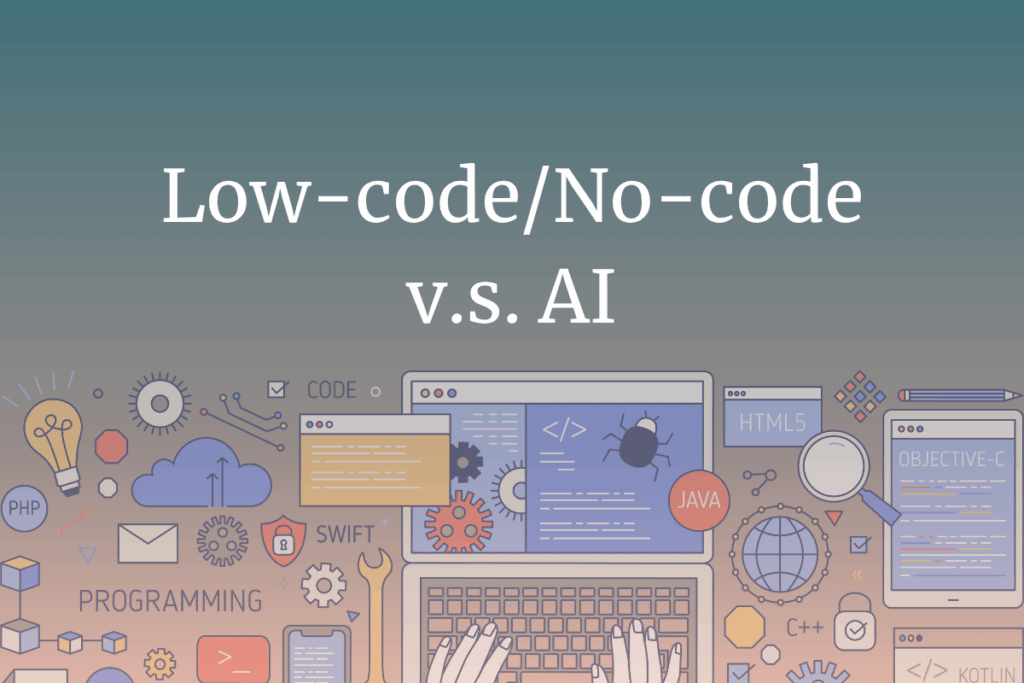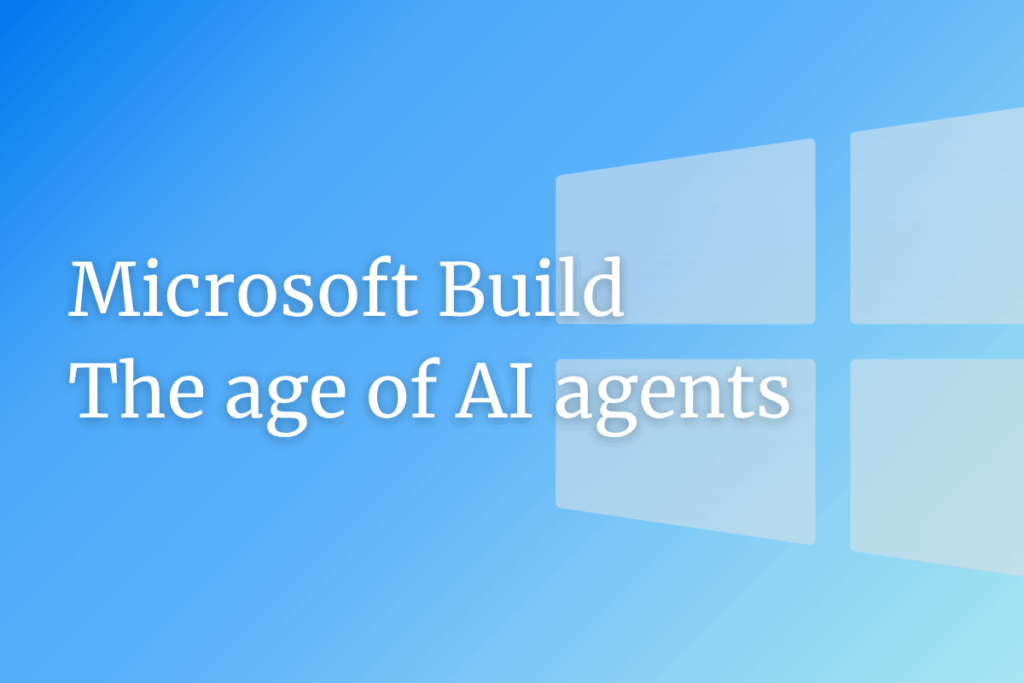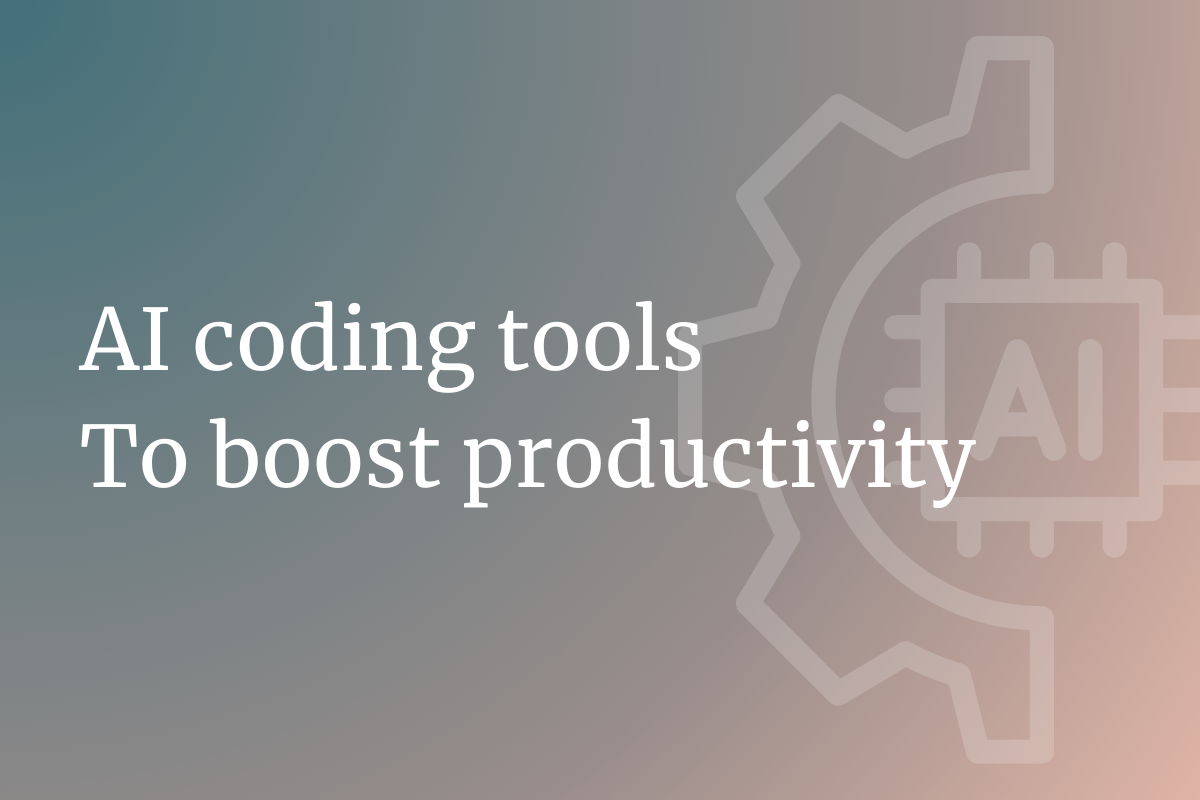Not long ago, software development was the exclusive domain of highly trained engineers, those who spoke fluent Java, debugged memory leaks with ease, and could spend days fine-tuning backend logic. Crafting a piece of software requires not only coding expertise but also years of practical experience, trial and error, and specialized education.
But we’re now witnessing a seismic shift.
Thanks to the rise of low-code/no-code (LCNC) platforms and AI-driven development tools, the walls that once guarded software creation are crumbling. Citizen developers, individuals without formal coding backgrounds, are stepping in to build websites, automate workflows, and launch startups using drag-and-drop tools or AI-generated code.
This democratization of development has opened new possibilities. At the same time, it’s raising important questions: How do LCNC platforms compare with AI coding assistants? Are they competing or converging? And what does this mean for the role of professional developers?
Let’s break down the evolution of these tools, analyze current market movements, and explore what the future holds for software creation.
The Current State of Low-Code/No-Code Platforms
Market Overview
Low-code/no-code platforms have been growing steadily for the past decade, fueled by the demand for faster app development and a widening digital skills gap. LCNC platforms allow users to build fully functional applications using visual interfaces, pre-built components, and automation logic, with minimal or no hand-written code.
Gartner predicts that the proportion of users of low-code applications outside IT departments will increase from 60% in 2021 to 80% by 2026.
Similarly, Forrester forecasts the LCNC market to grow to $52 billion by 2027, driven by cost-efficiency and the need for agile delivery in the post-pandemic digital transformation.
- Bubble and Webflow: Powering startups and portfolios with responsive websites and apps.
- OutSystems and Mendix: Enabling enterprises to deploy internal tools and client-facing apps rapidly.
- Airtable, Zapier, and Microsoft Power Automate: Simplifying workflow automation and data management for business teams.
Successes and Advantages
Low-code/no-code platforms have proven their worth across multiple dimensions, delivering tangible benefits that explain their rapid market adoption.
Speed and Agility: The primary advantage remains development velocity. Organizations can build and deploy applications in days rather than months, enabling them to respond rapidly to business needs and market changes. This speed advantage is particularly valuable for prototyping, testing business concepts, and iterating based on user feedback.
Democratization of Development: These platforms have successfully lowered the barrier to entry for software creation. Business users can directly translate their domain knowledge into functional applications without waiting for IT departments or learning complex programming languages. This democratization has unleashed creativity and innovation across organizations.
Cost Efficiency: By reducing dependency on specialized developers and shortening development cycles, low-code/no-code platforms offer significant cost advantages. Organizations can allocate technical resources to more complex projects while empowering business users to independently solve routine challenges.
Reduced Technical Debt: Modern low-code/no-code platforms generate clean, maintainable code and automate infrastructure concerns. This reduces the technical debt that often accumulates in custom-coded applications, leading to lower long-term maintenance costs.
Limitations and Criticism
Despite their success, low-code/no-code platforms face legitimate challenges that critics frequently highlight.
Flexibility Constraints: The most common criticism centers on limited customization options. While platforms offer extensive component libraries and integration capabilities, they cannot match the infinite flexibility of traditional programming for highly specialized requirements.
Vendor Lock-in Concerns: Organizations worry about becoming too dependent on specific platform providers. Migration between platforms or to traditional development approaches can be complex and costly, creating strategic risks around vendor relationships and pricing.
Performance Limitations: Generated applications may not achieve the same performance optimization as hand-coded solutions. For high-performance, resource-intensive applications, the abstraction layers can introduce overhead that impacts user experience.
Governance and Quality Control: The ease of creating applications can lead to sprawl and inconsistency. Without proper governance frameworks, organizations may find themselves with numerous applications that don’t follow enterprise standards or integrate well with existing systems.
Complexity Ceiling: There’s an inevitable point where application requirements exceed what visual development can reasonably support. Complex business logic, advanced algorithms, or intricate user interfaces may require traditional coding approaches.
The Rise of AI in Development: A New Paradigm
The Vibe Coding Revolution
Vibe coding, popularized by AI researcher Andrej Karpathy in early 2025, represents a fundamental shift in development methodology. This fast, improvisational, collaborative approach to creating software sees the developer and a large language model (LLM) acting rather like pair programmers in a conversational loop.
Unlike traditional AI-assisted coding, vibe coding emphasizes staying in a creative flow: the human developer avoids micromanaging the code, accepts AI-suggested completions liberally, and focuses more on iterative experimentation than code correctness or structure. Karpathy described it as “fully giving in to the vibes, embracing exponentials, and forgetting that the code even exists”.
This approach enables even amateur programmers to produce software without the extensive training and skills required for software engineering, while allowing experienced developers to focus on goals and prompts while AI handles the coding details. Studies show this methodology can achieve productivity gains of up to 55% faster completion times.
Advances in AI and Natural Language Processing
The artificial intelligence revolution in software development represents a fundamental shift in how we interact with code creation. What began as simple autocomplete features has evolved into sophisticated systems that understand context and intent and can generate complex solutions from natural language descriptions.
Modern AI development tools leverage large language models trained on billions of lines of code, enabling them to understand not just syntax but also programming patterns, best practices, and architectural principles. These systems can interpret natural language requirements and translate them into functional code across multiple programming languages and frameworks.
The breakthrough came with the realization that code is, fundamentally, a form of language. Just as AI models have become proficient at understanding and generating human language, they’ve developed remarkable capabilities in understanding programming languages, API documentation, and even commenting on and explaining existing code.
GitHub Copilot represents the vanguard of this revolution. Teams developed GitHub Copilot, a collaboration between GitHub and OpenAI, as an “AI pair programmer.” The AI tool helps you autocomplete code, making programming more efficient. It turns natural language prompts into coding suggestions based on the project’s context and style. This intelligent assistance goes beyond basic autocomplete, providing contextually relevant code suggestions that adapt to individual coding styles and project requirements.
Enhanced User Experience
AI-driven development tools have fundamentally transformed the developer experience, creating more intuitive and efficient workflows that feel less like programming and more like collaborative problem-solving.
Conversational Development: Tools like ChatGPT have introduced conversational interfaces to coding. Developers can describe what they want to build in plain English, ask for explanations of complex concepts, or request help debugging issues. This conversational approach makes programming more accessible and reduces the cognitive load associated with remembering syntax and API details.
Contextual Intelligence: Modern AI tools understand project context and coding standards, enabling consistency across large codebases. They can suggest improvements, identify potential bugs, and even recommend architectural changes based on the specific context of the project they’re working on.
Real-time Collaboration: AI tools serve as intelligent pair programming partners, providing real-time suggestions as developers type. This immediate feedback loop accelerates development and helps catch errors early in the process.
Learning and Adaptation: These tools continuously learn from developer behavior, adapting their suggestions to match individual coding styles and project requirements. The more a developer uses AI tools, the more personalized and relevant the assistance becomes.
Benefits and Advantages of Low-Code/No-Code
AI-driven development tools offer several compelling advantages that distinguish them from traditional low-code and no-code approaches.
Unlimited Flexibility: Unlike low-code/no-code platforms, which are constrained by predefined components, AI tools can generate any type of code solution. There are no artificial limitations on what can be created, making them suitable for the most complex and specialized requirements.
Professional Code Quality: AI tools generate code that follows industry best practices, includes proper documentation, and can be easily maintained and modified by human developers. The resulting code is indistinguishable from professionally written software.
Deep Integration Capabilities: GitHub Copilot clearly wins in terms of integration. It offers official support for major IDEs such as Visual Studio Code (VS Code), Visual Studio, and JetBrains, making it easy to use directly in the coding environment developers already rely on. This seamless integration means developers can access AI assistance without disrupting their established workflows.
Continuous Learning and Improvement: AI tools are constantly updated with new knowledge and capabilities. Unlike static low-code/no-code platforms that require manual updates, AI tools automatically benefit from advances in machine learning and expanded training data.
Code Maintenance and Optimization: GitHub Copilot helps developers write cleaner, more efficient code by recommending improvements and identifying refactoring opportunities. This support can keep your codebase maintainable, reduce technical debt, and help keep projects scalable and easy to update. These capabilities address some of the most persistent challenges in software development, particularly those related to long-term code maintenance and managing technical debt.
Cross-Platform Expertise: AI tools can work across multiple programming languages, frameworks, and platforms simultaneously. A single AI assistant can help with frontend JavaScript, backend Python, database queries, and DevOps configuration, providing comprehensive development support.
Comparing Low-Code/No-Code vs AI-Driven Tools
The relationship between low-code platforms and AI-driven development tools is evolving from one of competition to one of collaboration, with each approach offering distinct advantages for different use cases and user profiles. The comparison between low-code/no-code platforms and AI-driven development tools reveals distinct strengths and target audiences rather than direct competition.
Accessibility and Learning Curve
Low-Code/No-Code Platforms provide intuitive visual interfaces, ready-made templates, and straightforward deployment options. These platforms attract businesses of all sizes with their built-in security features, integration capabilities, and scalability. The visual nature makes them particularly accessible to citizen developers with basic technical knowledge.
AI-driven tools offer a different type of accessibility through natural language programming interfaces. Vibe coding enables even amateur programmers to produce software without extensive training, but it requires an understanding of software concepts and the ability to effectively prompt AI systems. The lower barrier means that more people—especially those changing careers—can participate in software building.
Development Speed and Efficiency
Low-code platforms excel at rapid application development and deployment, with setup times as quick as three days, compared to traditional IT modernization, which can take one to two years. Low-code platforms reduce development time by up to 90% for applications that fit within their framework constraints.
AI-driven development achieves speed through the automation of repetitive tasks and the intelligent generation of code. Studies show a 26% improvement in work completion speed, a 55% increase in task handling speed, and an 81% increase in productivity. However, this efficiency requires effective AI collaboration skills and may involve more iterative refinement.
Flexibility and Customization
Low-Code Platforms traditionally faced limitations in customization, but modern AI-integrated platforms address this through intelligent code generation and flexible integration capabilities. However, they can still become bottlenecks as applications scale, creating vendor lock-in effects.
AI-driven tools offer superior flexibility by generating native, high-performance, and scalable code tailored to specific requirements. Unlike rigid low-code frameworks, AI can generate code that meets exact specifications while maintaining the ability to modify and extend functionality as needed.
Code Quality and Maintainability
Low-Code Platforms provide built-in security features, integration capabilities, and scalability with standardized code structures that facilitate maintenance. The visual development environment enforces certain quality standards and reduces the likelihood of security vulnerabilities.
AI-Driven Development presents mixed results for code quality. While AI-generated code exhibits higher complexity, verbosity, and resource demands compared to human-written code, AI tools also provide automated testing, debugging, and optimization capabilities. Human oversight remains crucial to ensure code quality and maintain security.
Target Use Cases
Low-Code Platforms excel in:
Rapid MVP development and internal tool creation
Business process automation and workflow management
Citizen developer empowerment for department-specific solutions
Integration-heavy applications requiring minimal custom logic
AI-Driven Tools are optimal for:
Complex custom applications requiring unique business logic
Performance-critical systems need optimized code
Innovative features pushing beyond platform limitations
Educational scenarios and rapid prototyping
Cost and Resource Requirements
Low-code platforms offer 70% cost savings compared to traditional development, with predictable licensing models and a reduced need for specialized development skills. The total cost of ownership includes platform licensing, training, and potential migration costs if changing platforms.
AI-driven development requires investment in AI tools, training for effective prompt engineering, and skilled developers who can collaborate effectively with AI systems. However, the productivity gains can offset these costs, particularly for teams building complex or innovative applications.
Market Trends and Predictions
As the boundaries between traditional coding, low-code/no-code development, and AI-driven tools continue to blur, the software development market is undergoing a profound transformation. This is not just a matter of technological advancement; it reflects a broader shift in how businesses approach digital innovation, developer productivity, and software democratization.
The Rise of Hybrid Development Ecosystems
One of the most significant trends shaping the industry is the emergence of hybrid platforms that blend low-code/no-code interfaces with AI-enhanced capabilities. Microsoft’s Power Platform is a prime example, combining visual app builders with Copilot to allow users to generate formulas, automation flows, and even UI logic using natural language. This hybrid model offers the best of both worlds, accessibility for non-developers and advanced functionality for engineers, making it an attractive option for organizations seeking speed without sacrificing flexibility.
AI Development Tools Go Enterprise
AI-powered tools are rapidly gaining momentum in enterprise environments. GitHub Copilot for Business, Amazon CodeWhisperer, and Tabnine are being integrated into corporate workflows to support code completion, documentation, and test generation. Beyond just productivity boosts, these tools are now being fine-tuned to operate on private code repositories and adhere to internal security policies, effectively becoming enterprise-grade copilots. According to McKinsey, enterprise teams using these tools report up to 25% faster deployment times and 30% quicker bug resolution.
Open-Source Alternatives Are Gaining Traction
While proprietary platforms dominate the low-code and AI market, the open-source community is building powerful, customizable alternatives. Platforms like ToolJet, AppSmith, and Builder.io enable developers to self-host solutions, tweak backend logic, and avoid vendor lock-in, an increasingly important factor for startups and mid-sized companies with unique use cases or data sovereignty concerns. These platforms are helping reshape the landscape by prioritizing transparency, control, and developer autonomy.
Market Forecasts Point to Explosive Growth
The financial outlook for both low-code/no-code and AI development tools is bullish. IDC projects that AI solutions and services will yield a global cumulative impact of $22.3 trillion by 2030, reflecting growing investment in intelligent tooling and developer productivity. These numbers suggest a paradigm shift where traditional coding is no longer the default approach for building digital products.
Developer Sentiment Is Maturing
Early concerns about AI development tools—such as lack of control, code quality, and job security—are being replaced by pragmatic acceptance. A 2024 Stack Overflow developer survey found that 61% of developers are open to using AI coding tools regularly, particularly if they offer greater explainability and integrate smoothly with CI/CD workflows. Forum discussions on Hacker News and Reddit reveal a growing appreciation for how these tools handle routine tasks, freeing up developers to focus on architecture, innovation, and business logic.
Augmentation, Not Replacement
Ultimately, both AI and LCNC platforms are not about replacing developers but augmenting their abilities. The future will likely see teams composed of developers, designers, citizen coders, and AI agents working side by side. By blending these tools into cohesive workflows, companies can increase output, reduce time-to-market, and maintain high quality, all while scaling digital innovation across departments.
Conclusion
The software development landscape of 2025 represents not the death of traditional programming but its evolution into something more powerful, accessible, and collaborative. Low-code/no-code platforms and AI-driven development tools are creating a democratized ecosystem where the combination of human expertise, AI capabilities, and visual development environments generates unprecedented opportunities for innovation and efficiency.
The rise of low-code/no-code and AI-driven tools is reshaping the very definition of software development. Rather than replacing one another, these technologies are forming a spectrum of creation, from visual interfaces for citizen developers to AI copilots for seasoned coders. In the coming years, successful organizations will adopt hybrid approaches, blending the speed of LCNC, the power of AI, and the judgment of human developers. Those who adapt will build faster, better, and smarter.
Software creation is no longer a skill for the few. It’s becoming a collaborative process between humans and machines, and the future is wide open.
ContactContact
Stay in touch with Us




